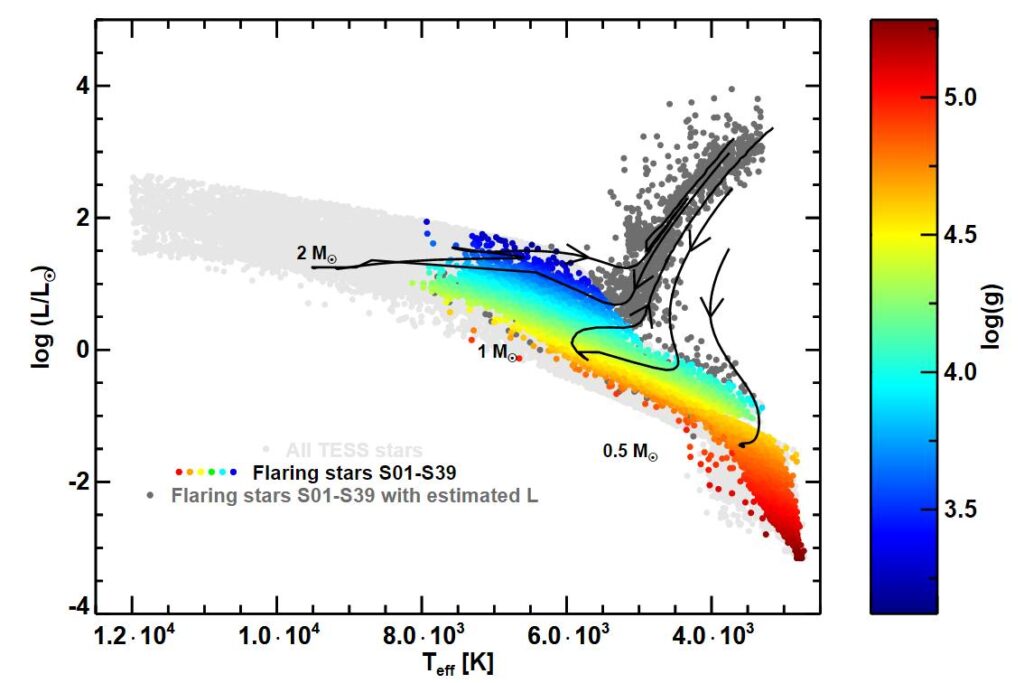
Mass review of stellar flares from the TESS mission data
In August this year a research group from the Institute of Astronomy UWr and Space Research Centre, consisting of M. Pietras, R. Falewicz, M. Siarkowski, K. Bicz, and P. Preś, published a mass review of data from the TESS space mission dedicated to identifying stellar flares on other stars. It is the largest review of this kind to date. It encompasses three whole years of the mission’s work. Mass reviews require developing a code to appropriately analyse all available data. The software created in this work, called WARPFINDER, will soon be made public.
The authors discovered that stellar flares can be seen on almost 8% of the observed stars (almost 24000 objects). The total number of identified flares reached 140 000. Virtually all of them are phenomena clearly stronger than their counterparts on the Sun. In the most powerful of them as much as 10 000 times more energy had been released than in the most powerful known sun phenomena.
Three types of stellar flares have been identified: simple flares that can be characterised with a single Wrocław profile, and two kinds of complex flares that require at least two Wrocław profiles to characterise. We think that the breakup into these types may correspond to at least two different mechanisms of heating stellar photospheres in flares.
Three exceptionally flare active stars are YZ CMi, V374 Peg, and GJ 1243, for which up to three flares per day are observed, with energies comparable to the Carrington flare. The Carrington Event is the strongest solar flare known to us and we assess that such flares appear on our star once in 150 years.
In the figure we see a HR graph where flaring stars are marked in coloured and dark dots. As you can see, flares are phenomena commonly occurring on all kinds of stars. The work has been published in one of the most significant astrophysical journals, The Astrophysical Journal, and is available to the public at the following link: „Statistical Analysis of Stellar Flares from the First Three Years of TESS Observations”, Pietras et al., 2022, ApJ, 935, 143.
